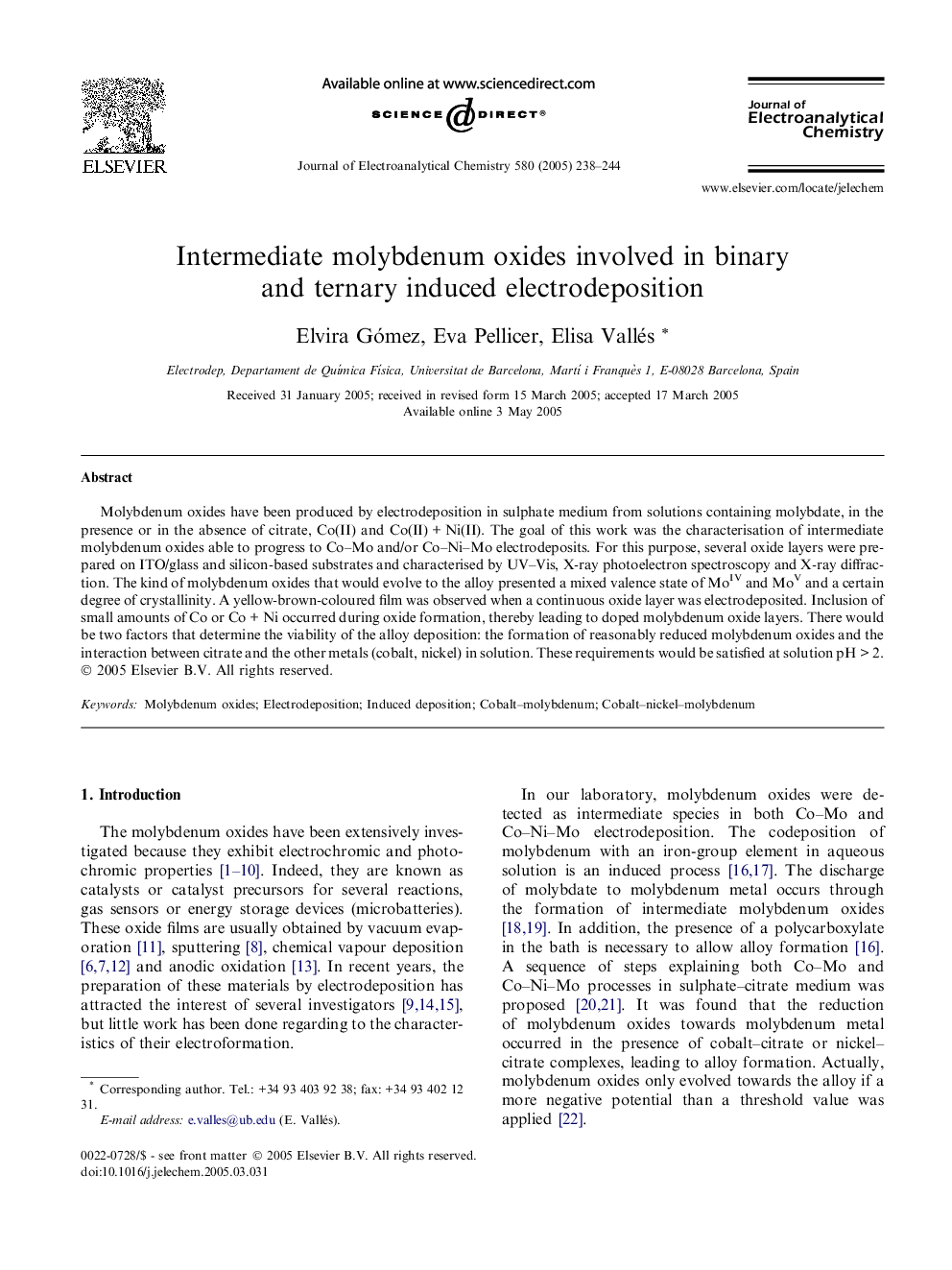| Article ID | Journal | Published Year | Pages | File Type |
|---|---|---|---|---|
| 9634235 | Journal of Electroanalytical Chemistry | 2005 | 7 Pages |
Abstract
Molybdenum oxides have been produced by electrodeposition in sulphate medium from solutions containing molybdate, in the presence or in the absence of citrate, Co(II) and Co(II) + Ni(II). The goal of this work was the characterisation of intermediate molybdenum oxides able to progress to Co-Mo and/or Co-Ni-Mo electrodeposits. For this purpose, several oxide layers were prepared on ITO/glass and silicon-based substrates and characterised by UV-Vis, X-ray photoelectron spectroscopy and X-ray diffraction. The kind of molybdenum oxides that would evolve to the alloy presented a mixed valence state of MoIV and MoV and a certain degree of crystallinity. A yellow-brown-coloured film was observed when a continuous oxide layer was electrodeposited. Inclusion of small amounts of Co or Co + Ni occurred during oxide formation, thereby leading to doped molybdenum oxide layers. There would be two factors that determine the viability of the alloy deposition: the formation of reasonably reduced molybdenum oxides and the interaction between citrate and the other metals (cobalt, nickel) in solution. These requirements would be satisfied at solution pH > 2.
Keywords
Related Topics
Physical Sciences and Engineering
Chemical Engineering
Chemical Engineering (General)
Authors
Elvira Gómez, Eva Pellicer, Elisa Vallés,
